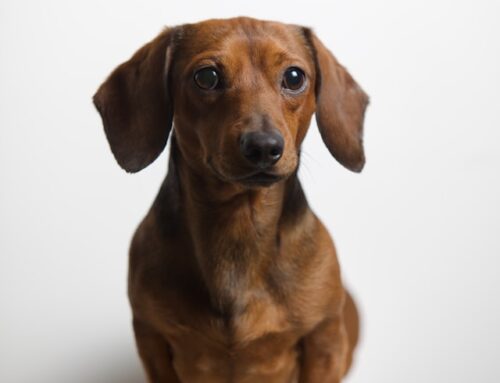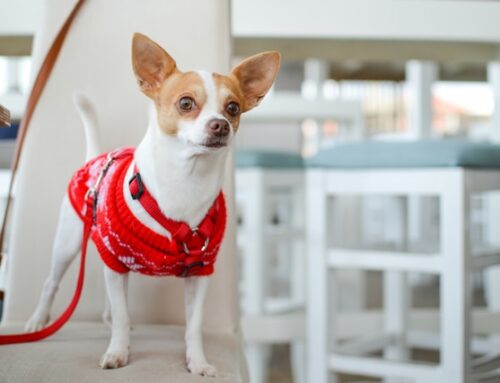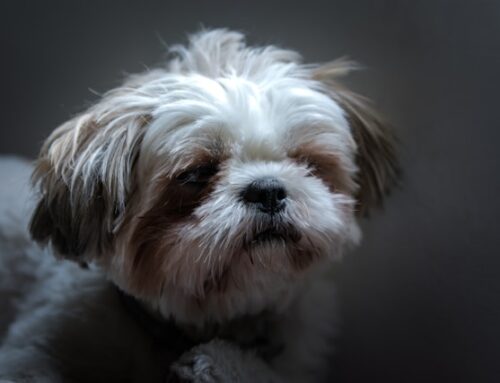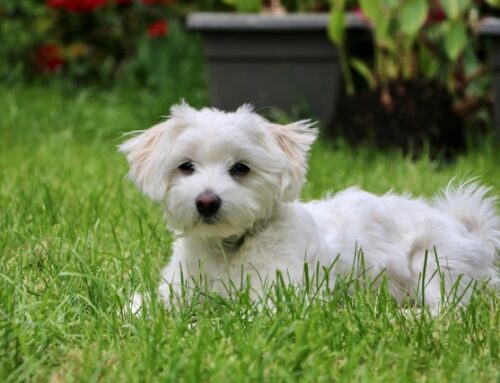Overview
Introduction to Long Haired Dachshund
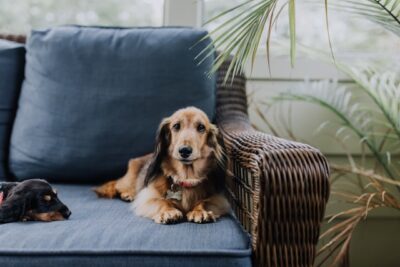
Long Haired Dachshunds, often affectionately referred to as "sausage dog," "wiener dog," or "badger dog," are an attractive and glamorous version of the classic Dachshund breed.
While Dachshunds are known for their elongated bodies and short legs, the long-haired variety adds a touch of elegance with their flowing coats. These terrier-type dogs are not just a dog; they are a medium breed dog with a unique history and set of characteristics that set them apart from their short-haired counterparts.
In this article, we'll delve into the world of Long Haired Dachshunds, exploring their history, temperament, and what makes them such a beloved breed among dog enthusiasts.
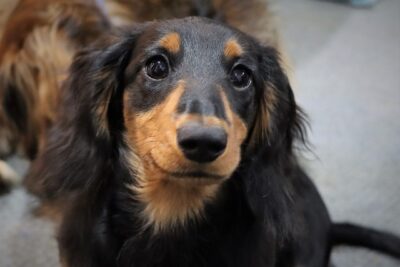
Brief history and origin of the long haired Dachshund
The Long Haired Dachshund, not a dog but a courageous dog, ideally suited for hunting, was originally bred in Germany in the 15th century. These dogs, with their short legs and elongated bodies, were part of the hound group and were used for hunting burrowing animals such as badgers and other burrowing animals.
Over time, they became popular family pets due to their affectionate nature and loyalty. Long Haired Dachshunds, also known as "sausage dogs," were selectively bred to excel at hunting and tracking, making them a valuable asset to hunters.
During World War I and World War II, they lost favour due to their Germanic origins, but they soon regained their status as beloved companions and skilled hunting dogs. Today, Long Haired Dachshunds are still admired for their hunting prowess and make a good family dog for those who understand their unique needs.
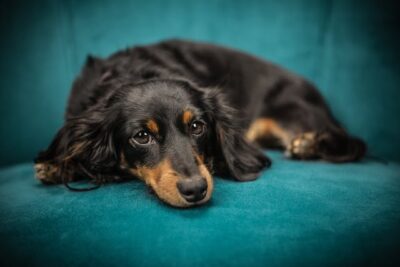
Why Long Haired Dachshunds are Beloved as Pets
Long Haired Dachshunds, often referred to as "long haired doxies," are a popular family pet cherished by doxie lovers worldwide. Their stunning coats, which come in various colors and patterns, are a hallmark of their appeal.
Originating from Germany, the name "Dachshund" is derived from the German word "Dachs," meaning badger, and "hund," meaning dog, reflecting their historic role as badger hunters. Beyond their distinctive appearance, Long Haired Dachshunds are known for their affectionate and playful nature, making them excellent companions for families and other dogs alike.
Their adaptability to various living situations and their loyalty to their owners further solidify their status as a beloved and friendly dog breed.
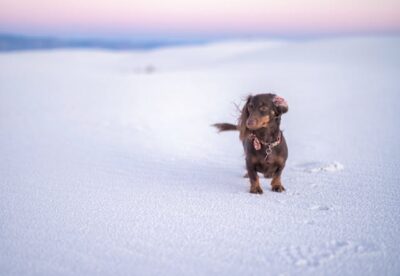
Physical Characteristics of Long Haired Dachshund
Coat Type, Coat Texture, Coat Length, and Color Variations
The long-haired Dachshund's coat is a defining feature among the breed's coat types, distinct from the short-haired and wire-haired varieties. This version boasts a silky, flowing coat that drapes elegantly over its body, forming attractive feathering along the ears, chest, and legs.
Unlike the straight coat of the short-haired Dachshund or the wiry texture of the wire-haired Dachshund, the long-haired variety has a slightly waved coat that adds to its charm.
Long-haired Dachshunds can come in a variety of colors, including cream, black and tan, red, and chocolate and tan, offering a diverse range of attractive feathering and coat variations.
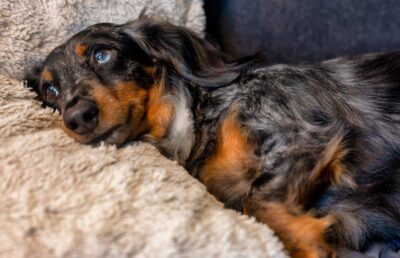
Body structure and size
The long-haired Dachshund is known for its unique body structure, characterized by a long back, which is a hallmark of the breed. Unlike the standard Dachshund, which also has short legs, the long-haired variety maintains this long-backed breed characteristic. Similarly, the miniature Dachshund, a smaller version of the standard breed, also exhibits this elongated body shape and characteristic short legs.
Their short legs, combined with their elongated body shape, contribute to their distinctive appearance. When looking at a long-haired Dachshund or miniature Dachshund, their paw pads are often visible due to their long body, further highlighting their charming features.
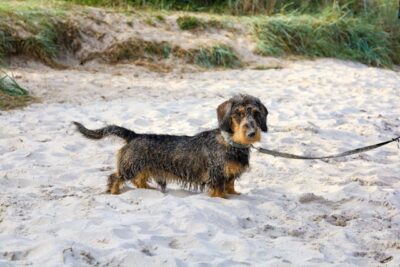
Comparison with other coat varieties (smooth and wire-haired)
When comparing the long-haired Dachshund to its smooth and wire-haired counterparts, the most noticeable difference lies in their coats.
While smooth Dachshunds have short, sleek coats and wire-haired Dachshunds have rough, wiry coats, the long-haired version boasts a luxurious, flowing coat that sets it apart.
Additionally, long-haired Dachshunds come in a variety of colors, just like the other coat varieties, adding to their unique charm and appeal.
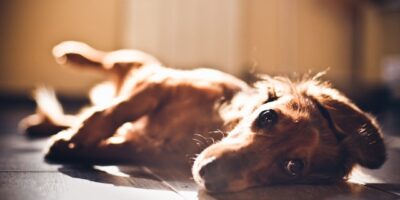
Temperament and Personality of Long Haired Dachshund
Typical traits and behaviors of Long Haired Dachshunds
Long-haired Dachshunds are known for their lively personalities and seemingly obstinate nature. They are often described as friendly dogs but can also be quite vocal, known to bark loudly to express themselves.
Despite their lively nature, they can also be couch potatoes, enjoying lounging around with their owners. Overall, long-haired Dachshunds have charming personalities that endear them to their families.
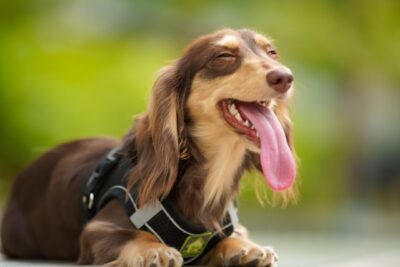
How their personality compares to other Dachshund varieties
When comparing the temperament and personality of long-haired Dachshunds to other Dachshund varieties, they are often described as having their own voice. Long-haired Dachshunds tend to have a more laid-back and calm demeanor compared to the spirited wire-haired Dachshunds and the bold, assertive nature of smooth-coated Dachshunds.
However, all Dachshund varieties share common traits such as loyalty, affection, and a strong hunting instinct. Each variety may exhibit these traits to varying degrees, but all are known for their lively personality and being friendly dogs, with a loving and devoted nature to their families.
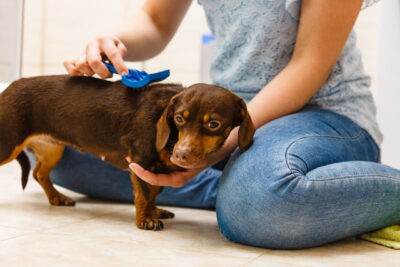
Grooming Needs of Long Haired Dachshund
Daily, Weekly, and Monthly Grooming Routines
The long-haired Dachshund requires regular grooming to maintain their luxurious coat. Daily brushing helps prevent matting and removes loose fur. Weekly baths with a mild dog shampoo help keep their coat clean and healthy.
Monthly nail trims are recommended, along with checking and cleaning their ears. Additionally, trimming the hair on their paw pads regularly can help prevent matting and discomfort.
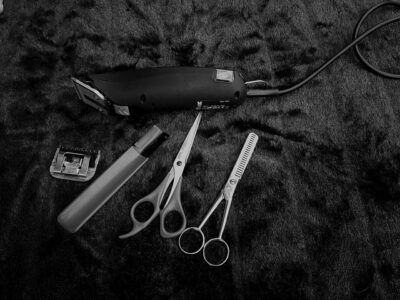
Recommended Grooming Tools and Techniques
The grooming needs of a Long Haired Dachshund are relatively low-maintenance compared to some other long-haired breeds, but they still require regular care to keep their coat in top condition.
Their long, luxurious coat should be brushed regularly to prevent matting and tangling. A slicker brush or a pin brush is recommended for daily brushing, along with a comb to gently detangle any knots.
Bathing should be done occasionally using a mild dog shampoo, followed by thorough drying to prevent skin issues. Long-haired Dachshunds are prone to skin problems if their coat remains damp, so ensuring they are completely dry is important.
Regular nail trimming is necessary to prevent overgrowth and discomfort, and checking and cleaning their ears regularly can help prevent ear infections, a common issue in floppy-eared breeds.
Despite their relatively low-maintenance grooming needs, regular care and attention to their coat, nails, and ears will keep your Long Haired Dachshund looking and feeling their best.

Health Considerations for Long Haired Dachshund
Common Health Issues Associated with Long Haired Dachshunds
Long Haired Dachshunds are susceptible to various inherited eye disorders, including progressive retinal atrophy (PRA) and cataracts. These conditions can be exacerbated by breeding dogs with inherited eye disorders, highlighting the importance of responsible breeding practices.
Additionally, their long body shape puts them at risk for back problems, such as intervertebral disc disease (IVDD).
Heart disease is also a concern for Long Haired Dachshunds, emphasizing the need for regular veterinary check-ups and a healthy lifestyle to manage these health issues and ensure a high quality of life.

Preventative Care, Vaccination, and Regular Check-Ups
Preventative care, including regular vaccinations and check-ups, is crucial for maintaining the health of Long Haired Dachshunds. Their long bodies and short legs make them prone to back problems, so it's essential to keep them at a healthy weight and provide proper exercise.
Additionally, Long Haired Dachshunds should be routinely eye tested for conditions such as progressive retinal atrophy (PRA) and cataracts to ensure their eye health is maintained. Regular veterinary visits can help detect and address any health issues early on, ensuring a long and healthy life for your furry friend.
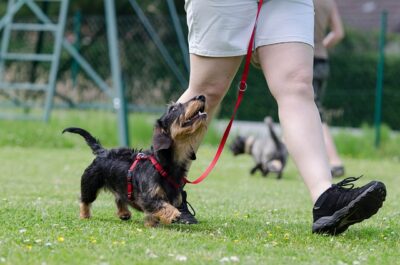
Exercise and Activity Requirements for Long Haired Dachshund
Ideal exercise routines for Long Haired Dachshunds
Long Haired Dachshunds have moderate exercise needs despite their short legs. They should ideally get about an hour's exercise each day to maintain their health and prevent obesity. Regular exercise can also help prevent back problems, which Dachshunds are prone to due to their long bodies.
Activities like short walks, playtime in a fenced yard, or interactive games indoors can help keep them active and healthy.
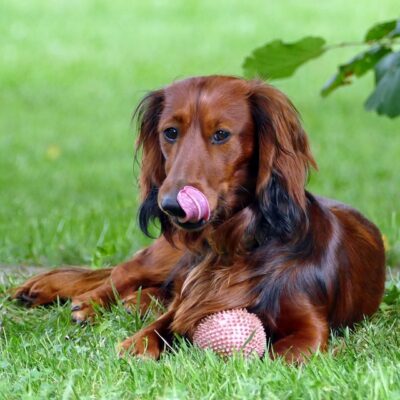
Indoor and outdoor activities they enjoy
Long Haired Dachshunds are lively and curious dogs that enjoy a variety of indoor and outdoor activities. Indoors, they love playing with toys that challenge their minds, such as puzzle toys or interactive games with their owners.
These activities not only provide physical exercise but also mental stimulation, which is essential for this intelligent breed. Outdoors, Long Haired Dachshunds relish the opportunity to explore new scents and environments.
They enjoy short walks around the neighborhood, during which they can satisfy their natural instinct to sniff and investigate their surroundings. In a safely enclosed area, they love to run and play, showing off their agility and athleticism.
Their playful nature and adaptability make Long Haired Dachshunds great companions for various environments. Whether they're curled up on the couch with their owners or romping in the backyard, they thrive on companionship and enjoy being a part of their family's daily activities.
With their friendly demeanor and love for adventure, Long Haired Dachshunds are well-suited for both indoor and outdoor adventures.
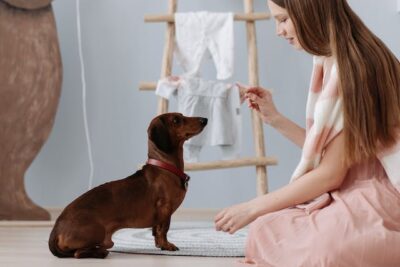
Training Tips for Long Haired Dachshund
Best Dog Training Methods for Long Haired Dachshund
Training a Long Haired Dachshund requires patience and consistency. Start training at a young age to establish good habits early on. Use positive reinforcement techniques, such as treats and praise, to encourage good behavior.
When walking, use a loose lead to prevent strain on their back, given the Dachshund's long body. Focus on teaching them good recall, as Dachshunds can be independent and may chase after scents if not trained properly.
Common challenges and how to overcome them
Training a Long Haired Dachshund should start at an early age to establish good habits. Use positive reinforcement techniques, such as treats and praise, to encourage desired behaviors.
Since Dachshunds have short legs and are prone to back issues, focus on training them to settle quietly and comfortably in their designated spaces. Consistent training and patience will help your Long Haired Dachshund become a well-behaved and happy companion.

Nutrition and Feeding for Long Haired Dachshund
Recommended diet for Long Haired Dachshund
A recommended diet for Long Haired Dachshunds should include high-quality dog food with real meat as the primary ingredient.
Consider adding fish oil to their diet to support their skin and coat health. Follow feeding guidelines provided by the food manufacturer to ensure they are receiving the proper nutrients in the right amounts.
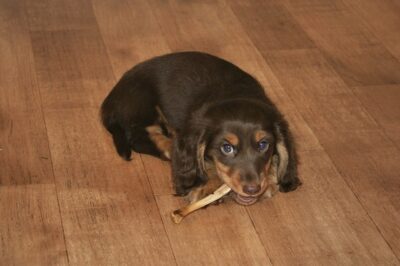
Feeding schedule and portion control
Establishing a regular feeding schedule is crucial for the health and well-being of Long Haired Dachshunds. This breed is prone to obesity, so it's essential to divide their daily food allowance into two or three meals to prevent overeating.
Portion control is key when feeding Long Haired Dachshunds. Be mindful of the amount of food you are offering, and adjust as needed based on their activity level and weight. It's important to monitor their body condition and consult with your veterinarian to ensure they are maintaining a healthy weight.
In addition to portion control, choosing a high-quality dog food that meets their nutritional needs is important. Look for a formula that is specifically formulated for small breeds or for dogs with a long, luxurious coat. Providing fresh water at all times is also essential for their health and hydration.
By establishing a regular feeding schedule, practicing portion control, and choosing the right food, you can help ensure that your Long Haired Dachshund maintains a healthy weight and enjoys a happy, active life.
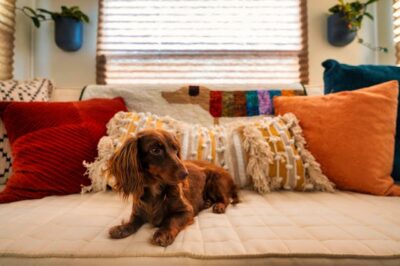
Living Arrangements For Long Haired Dachshund
Suitable living environments for Long Haired Dachshund
Long Haired Dachshunds can adapt well to various living environments, including small spaces like apartments, as long as they receive enough exercise and mental stimulation. They are known to settle quietly indoors and enjoy being close to their owners.
Providing them with a comfortable bed and designated space to retreat to can help them feel secure and content in their living arrangements.
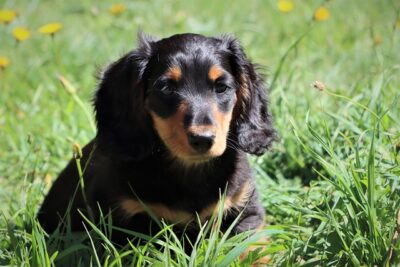
Indoor vs. Outdoor Living Considerations
When considering living arrangements for a Long Haired Dachshund, it's important to weigh the benefits and risks of indoor versus outdoor living.
While they can thrive in both environments, indoor living provides more opportunities for interaction with family members and protection from the elements.
Outdoor living can offer more space for exercise and exploration, but Dachshunds should always have access to a secure, escape-proof area due to their tendency to wander and hunt. Overall, providing a balance of indoor and outdoor time can help meet their physical and mental needs.
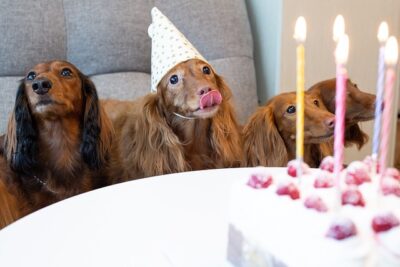
Socialization Needs For Long Haired Dachshund
Importance of Early Socialization for Long Haired Dachshund
Proper socialization is crucial for Long Haired Dachshunds, starting from a young age. Early socialization helps them become well-adjusted adults, comfortable with various people, animals, and environments.
It also helps prevent fearfulness and aggression, common issues in poorly socialized dogs. Regular exposure to different situations, people, and other animals can help Long Haired Dachshunds develop into friendly, confident companions.
How to socialize them with other pets and people
Socializing Long Haired Dachshunds with other pets and people, including older children, is important for their development. Start by introducing them to new experiences and environments gradually, using positive reinforcement to reward calm behavior.
Allow them to interact with other animals under supervision, ensuring the interactions are positive and safe. Encourage settling quietly in new situations to help them feel comfortable and confident.
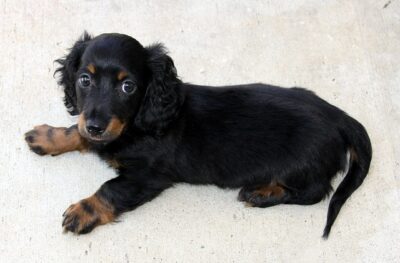
Long Haired Dachshund Puppies
Bringing a new puppy home
Bringing a new Long Haired Dachshund puppy home is an exciting time. Ensure you have all the necessary supplies, such as food, water bowls, a comfortable bed, and toys, to make them feel welcome.
Set up a designated area for them to rest and eat, and begin house training and socialization early on. Establish a routine for feeding, potty breaks, and playtime to help them adjust to their new home smoothly.
Early Training and Socialization
Early training and socialization are crucial for Long Haired Dachshund puppies, including interactions with older children. Start with basic obedience training, using positive reinforcement techniques like treats and praise.
Introduce them to various people, animals, and environments to help them become well-adjusted adults. Encourage positive interactions with older children and other dogs to prevent fearfulness or aggression later in life.
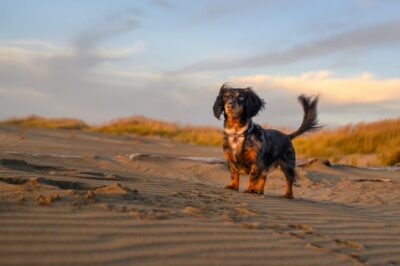
Senior Long Haired Dachshund
Special care needs for aging dogs
Senior Long Haired Dachshunds may require special care to ensure their comfort and well-being as they age. Regular veterinary check-ups become even more important to monitor for age-related health issues such as arthritis, dental problems, and vision or hearing loss.
Adjusting their diet to meet their changing nutritional needs and providing regular, gentle exercise can help maintain their mobility and overall health. Additionally, providing a warm and comfortable environment, especially in colder weather, can help alleviate any discomfort associated with aging.
Signs of aging to watch out for
As Long Haired Dachshunds age, there are several signs to watch out for that may indicate they are entering their senior years. These can include changes in appetite, weight loss or gain, decreased activity levels, stiffness or difficulty moving, dental issues, and changes in behavior or temperament.
Keep an eye out for these signs and consult with your veterinarian if you notice any significant changes, as early detection and intervention can help manage age-related issues and maintain your senior Dachshund's quality of life.
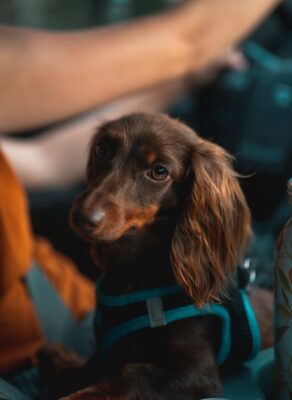
Traveling with Your Long Haired Dachshund
Tips for safe and comfortable travel
When traveling with your Long Haired Dachshund, it's important to ensure their safety and comfort. Use a secure and well-ventilated carrier or harness in the car to keep them safe during the journey. Plan regular stops to allow them to stretch their legs, go to the bathroom, and stay hydrated.
Bring along their favorite toys, blankets, and food to help them feel more comfortable and at ease during the trip.
Travel accessories you might need
When traveling with your Long Haired Dachshund, consider bringing along some essential travel accessories. A sturdy and comfortable travel carrier or crate is essential for their safety and security. A travel water bottle and collapsible bowl will help keep them hydrated on the go.
Additionally, a travel blanket or bed can provide them with a familiar and comfortable space during the journey.
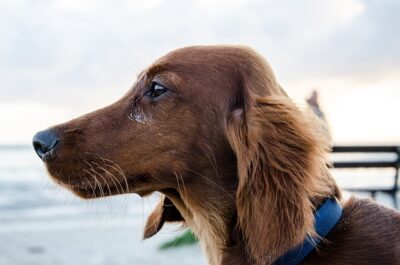
Long Haired Dachshund Breed Standards
Official Breed Standards from Kennel Clubs
The American Kennel Club (AKC) outlines the official breed standard for Long Haired Dachshunds, which reputable breeders adhere to. According to the AKC, Long Haired Dachshunds should have a well-balanced and proportioned body, with a long, muscular neck and a distinctive elongated back.
Their coat should be sleek and shiny, with feathering on the ears and tail. Adhering to these breed standards helps ensure the health, temperament, and appearance of Long Haired Dachshunds.
How Breed Standards Impact Breeding Practices
Breed standards play a crucial role in guiding breeding practices for Long Haired Dachshunds. Breeders use these standards as a benchmark to select breeding pairs that exhibit the desired traits outlined in the standard, such as coat color, size, and temperament.
By adhering to these standards, breeders strive to produce puppies that conform to the ideal characteristics of the breed. This helps maintain the integrity of the breed and ensures that Long Haired Dachshunds continue to possess the traits that make them unique and desirable.
Conclusion: Long Haired Dachshund
Recap of key points about long haired dachshunds
- Introduction and History: Long Haired Dachshunds, known for their elegant coats, originated in Germany in the 15th century as badger hunters. They later became popular family pets due to their affectionate nature and loyalty.
- Physical Characteristics: Long Haired Dachshunds have a distinctive long back and short legs, with a silky, flowing coat that comes in various colors. They maintain the breed's unique body structure, which contributes to their charm.
- Temperament and Personality: They are known for their lively personalities, seemingly obstinate nature, and loud bark. Despite this, they can also be couch potatoes and have charming personalities that endear them to their families.
- Grooming Needs: Long Haired Dachshunds require regular grooming, including daily brushing, monthly baths, and nail trimming. They should also have their paw pads trimmed regularly to prevent matting.
- Health Considerations: They are prone to various inherited eye disorders, heart disease, and back problems. Regular veterinary check-ups and eye tests are essential for maintaining their health.
- Exercise and Activity: They need about an hour of exercise each day and enjoy both indoor and outdoor activities. Short walks and playtime are ideal for keeping them active and healthy.
- Training Tips: Training should start at an early age, focusing on good recall and settling quietly. Positive reinforcement techniques work best, along with consistency and patience.
- Nutrition and Feeding: A high-quality diet with fish oil supplementation is recommended. Portion control and a regular feeding schedule are important to prevent overeating and maintain their health.
- Living Arrangements: They can adapt well to various living environments, including small spaces, as long as they receive enough exercise and mental stimulation. Providing a comfortable bed and designated space is essential for their well-being.
- Socialization Needs: Proper socialization from a young age is crucial to prevent fearfulness and aggression. They should be introduced to various people, animals, and environments gradually.
Final thoughts on why they make great pets
Long Haired Dachshunds are beloved for their affectionate nature, unique appearance, and playful personalities. They are adaptable to different living situations and are loyal companions to their families.
Their charming personalities and loving nature make them excellent family pets, and their hunting instincts add an element of excitement to their personalities.
Overall, Long Haired Dachshunds are cherished for their beauty, personality, and devotion, making them a wonderful addition to any dog-loving household. If you're interested in adding a Long Haired Dachshund to your family, you can find our Dachshund puppies for sale in Florida and surrounding areas at our website. Our puppies are thoughtfully bred from reputable breeders, ensuring they are well-loved, socialized, and healthy.
Frequently Asked Questions
- What is the origin of the Long Haired Dachshund?
- Long Haired Dachshunds originated in Germany, where they were bred in the 15th century to hunt badgers and other burrowing animals.
- Do Long Haired Dachshunds have short legs like other Dachshunds?
- Yes, Long Haired Dachshunds have short legs, which is a characteristic trait of the Dachshund breed.
- What colors occur in Long Haired Dachshunds?
- Long Haired Dachshunds come in various colors, including cream, black and tan, red, and chocolate and tan.
- Why are Long Haired Dachshunds often called "sausage dogs"?
- Long Haired Dachshunds are often called "sausage dogs" due to their long, slender bodies and short legs, which resemble a sausage or hot dog.
- How can I ensure I'm getting a Long Haired Dachshund from a reputable breeder?
- To ensure you're getting a Long Haired Dachshund from a reputable breeder, research breeders carefully, ask for references, and visit the facility if possible. Reputable breeders adhere to breed standards and prioritize the health and well-being of their dogs.
- Is Germany the only country where Dachshunds originate?
- Yes, Germany is the country of origin for Dachshunds, where they were originally bred for hunting purposes.
- Are Long Haired Dachshunds good family pets?
- Yes, Long Haired Dachshunds can make excellent family pets. They are known for their affectionate nature and loyalty to their families.
- Do Long Haired Dachshunds require a lot of grooming?
- Yes, Long Haired Dachshunds require regular grooming to maintain their luxurious coats. Daily brushing and occasional baths are recommended to keep their coats healthy and free of tangles.
- Do Long Haired Dachshunds have any specific health concerns?
- Long Haired Dachshunds are prone to certain health issues, including back problems, heart disease, and inherited eye disorders. Regular veterinary check-ups are essential to monitor their health.
- Are Long Haired Dachshunds suitable for apartment living?
- Yes, Long Haired Dachshunds can adapt well to apartment living as long as they receive enough exercise and mental stimulation. Their small size and adaptability make them well-suited for indoor living.

